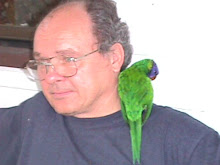July was cold. Given that this is winter it is hardly
surprising but the thing about winter is that the days become shorter, the
nights longer and the temperatures lower.
Marry this to the fact that I’m usually on the road to school by 0545
hours [before sunrise] and can on occasions return home at around 1745 hours
[near, if not always after] sunset, it is never a month of great avian
expectations. We have not, for example,
ever topped the half century [50] species in the total July tally [compare that
to the 70 species recorded in January this year].
Nevertheless, for a July the
tally reached a reasonably respectable 46; the best tally since the 46 of 2004-
and the 46 of 2003 and 2002!
We had to wait until the end of
the first week of the month to report anything out of the ordinary for Allen Road; a Fan-tailed Cuckoo Caacomantis flabelliformis calling on
the morning of 7 July. The Yellow-tailed
Black-Cockatoos Calyptorhynchus funereus
appeared the following day. Indeed, it
seemed to arrive on an almost weekly basis thereafter, presenting good views on
13, 21 and 28 July. On 13 July the
White-faced Heron Egretta novaehollandiae
put in the first of its two visits for the month; it also appeared at the edge
of Denis’s small front dam [its favourite haunt in the immediate vicinity] on
28 July.
The recently-arrived Black Kite Milvus migrans graced Allen Road on 14
July, the same day as the Little Lorikeets Glossopsitta pusilla.
By the third week of the month
matters seemed to be taking a turn for the better. The Little Friarbird Philemon citreovulgaris suddenly called on 21 July: the Southern
Boobook Ninos novaeseelandiae returned for its only performance on 23 July. The Bush Stone-curlew Burhinus grallarius called
on 29 July, with a repeat performance the following day. During the last week of the month we scored the Glossy Black-Cockatoo Calyptorhynchus lathami on 31 July, the same day as the magnificent Pacific Baza Aviceda subcristata!
Winter can be a quiet period along Allen Road.


